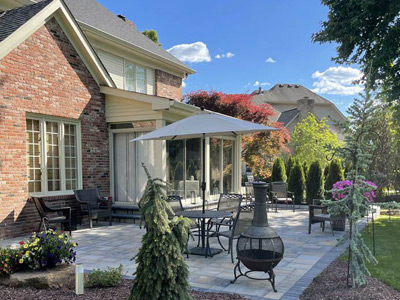5 Common Mistakes to Avoid When Installing Patio Pavers
 Installing patio pavers can be a rewarding way to upgrade your outdoor space, whether designing a new patio or renovating an existing one. Pavers offers a durable, attractive solution for patios, walkways, and driveways, but the installation process requires careful attention to detail.
Installing patio pavers can be a rewarding way to upgrade your outdoor space, whether designing a new patio or renovating an existing one. Pavers offers a durable, attractive solution for patios, walkways, and driveways, but the installation process requires careful attention to detail.
Though it may seem like a simple DIY task, several common mistakes can impact your patio's long-term durability, appearance, and function.
Here, the Preferred Outdoor Designs, LLC team discusses five common mistakes to avoid when installing patio pavers. Understanding and taking steps to prevent these potential errors will ensure your project goes smoothly and your patio remains stable, functional, and beautiful for a long time.
1. Skipping Proper Site Preparation
Proper site preparation is crucial for a successful patio paver installation. Many homeowners skip this step, thinking it will save time. However, an improperly prepared site can lead to uneven surfaces, drainage issues, and paver movement over time. Before laying pavers, clear the area of any grass, weeds, or debris and level and compact the surface.
2. Neglecting Proper Drainage
Drainage is essential when installing patio pavers. Without a proper drainage plan, water will accumulate on your patio, leading to erosion, puddles, or even shifting pavers. A slight slope of 1/4 inch per foot from the center to the outer edges ensures water runs off the surface rather than pooling. The slope should be toward the yard or away from structures like your home or shed to prevent water from seeping into foundations.
3. Using Inadequate Base Materials
The base material is the foundation of your patio, so choosing the right materials is crucial. Some people make the mistake of using only sand to create a base, but this can lead to shifting pavers and uneven surfaces. Instead, combine crushed stone or gravel as the primary base, followed by a layer of sand on top. The crushed stone provides stability and helps with drainage, while the sand smooths out the surface of the pavers. Compact the base thoroughly before placing the pavers for a solid, long-lasting foundation.
4. Forgetting to Fill the Joints Between Pavers
Once the pavers are laid, filling the joints between them is essential. If left unfilled, the gaps will allow for weed growth and may lead to shifting pavers. The most common material used to fill these joints is polymeric sand, which hardens when wet and helps lock the pavers into place. Sweep the sand into the joints and use a compactor to settle it before adding more sand. Ensure that the joints are filled, as this will prevent weed infiltration and keep the patio stable.
5. Improper Cutting of Pavers
You must make accurate cuts along the edges, curves, or around obstacles such as trees or garden beds to get a polished, professional-looking patio. Many people overlook the importance of precise cutting, which can lead to unsightly gaps and uneven edges. A masonry saw or a specialized paver cutter is best to achieve clean, straight cuts. When cutting, take your time to measure carefully and cut accurately to ensure the pavers fit snugly together, giving your patio a cohesive and aesthetically pleasing appearance.
How Experienced Hardscaping Contractors Can Help
Avoiding these common mistakes ensures that your patio pavers are installed correctly, leading to a long-lasting and beautiful outdoor space. If you're unsure about any steps or want a professional result, consider working with experienced hardscaping contractors.For details about our patio paver services, contact Preferred Outdoor Designs, LLC via this Online Form. You can also call us at 502-245-3997, and we will get back to you shortly.
